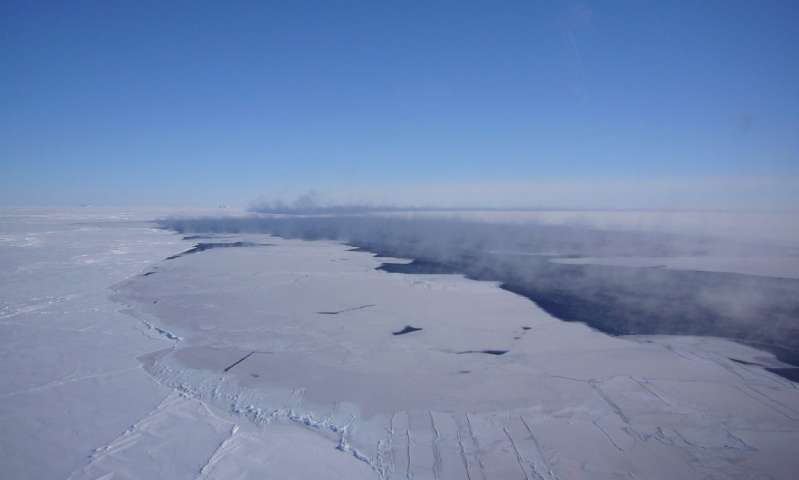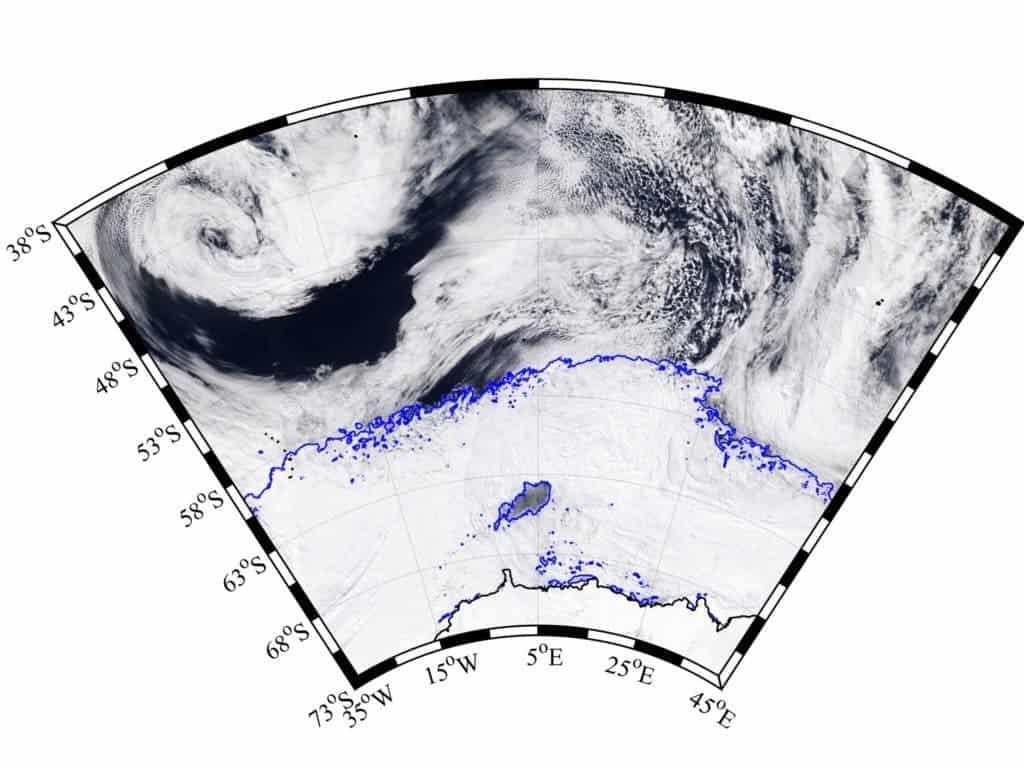An incredibly large area of ice has opened up in the Weddell Sea east of the Antarctic Peninsula, for the second time in 40 years. The phenomenon was previously observed in the same location in the 1970s when satellite imaging was barely making its first baby steps. It’s not clear at this point if the ice hole is influenced in any way by climate change.

Although winter is in full swing right now in Antarctica, a large swath of water in the Weddell sea is ice-free. Such ice-free areas are called ‘polynya’ (Russian) by polar scientists. These occur in the Arctic and Antarctica, typically around the coast. This gaping polynya, which measures an area equivalent to the Netherlands, opened right in the middle of a sea which would have otherwise been completely covered in thick ice.
It’s not that it’s not cold. Temperatures are in their usual frigid range for this time of year. Instead, the Weddel Polynya can be pinned to water stratification in the Southern Ocean, according to scientists at the GEOMAR Helmholtz Centre for Ocean Research who closely following its development.

Usually, a very cold but fresh layer of water covers a warmer and saltier layer of water, acting as insulation. In certain conditions, however, the warm water can rise to the surface, melting the ice. “This is like opening a pressure relief valve – the ocean then releases a surplus of heat to the atmosphere for several consecutive winters until the heat reservoir is exhausted,” said Prof. Dr. Mojib Latif, head of the Research Division at GEOMAR, in a public statement.
The big questions right now are how often such polynya occur and whether or not climate change is amplifying their formation. In situ data is hard to come by but satellite readings will help computer models come up with more precise simulations that might single out culprits. Compared to the last time this happened 40 years ago, scientists have far more data on their hands.
A preliminary analysis run by American scientists suggests that the Weddell Polynya should not occur again because of climate change at all. Due to higher precipitation levels in the region and melting ice, the surface is expected to decouple from deeper water layers. However, previous other studies which applied the “Kiel Climate Model” found that polynya is part of a long-term naturally varying process, which can only mean the hole will open again sooner or later.
“The fact that now a large, ice-free area can be observed in the Weddell Sea confirms our theory and gives us another data point for further model studies,” said Dr. Torge Martin, meteorologist and climate modeler at GEOMAR.
“Global warming is not a linear process and happens on top of internal variability inherent to the climate system. The better we understand these natural processes, the better we can identify the anthropogenic impact on the climate system”, said Professor Latif.
Scientific reference: Mojib Latif et al, Southern Ocean Decadal Variability and Predictability, Current Climate Change Reports (2017). DOI: 10.1007/s40641-017-0068-8



